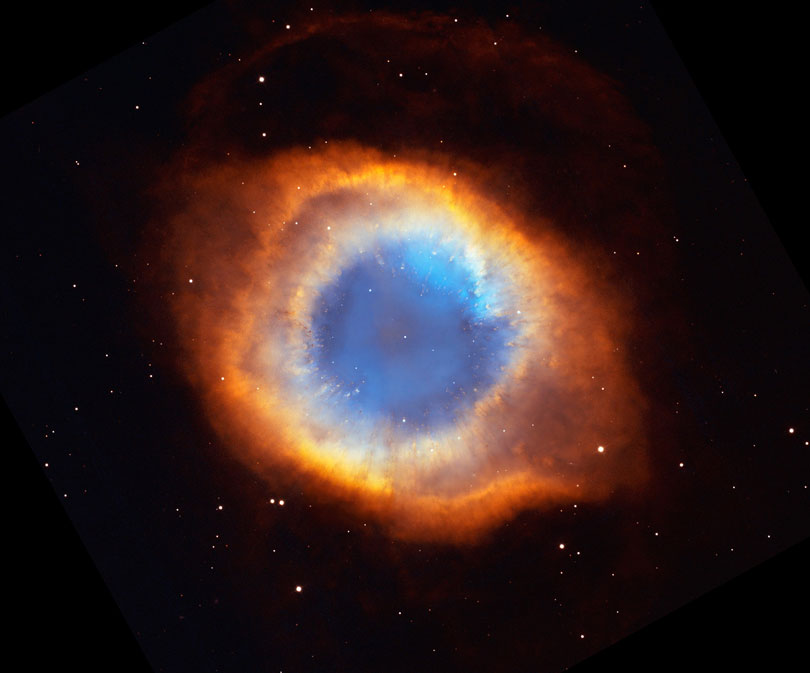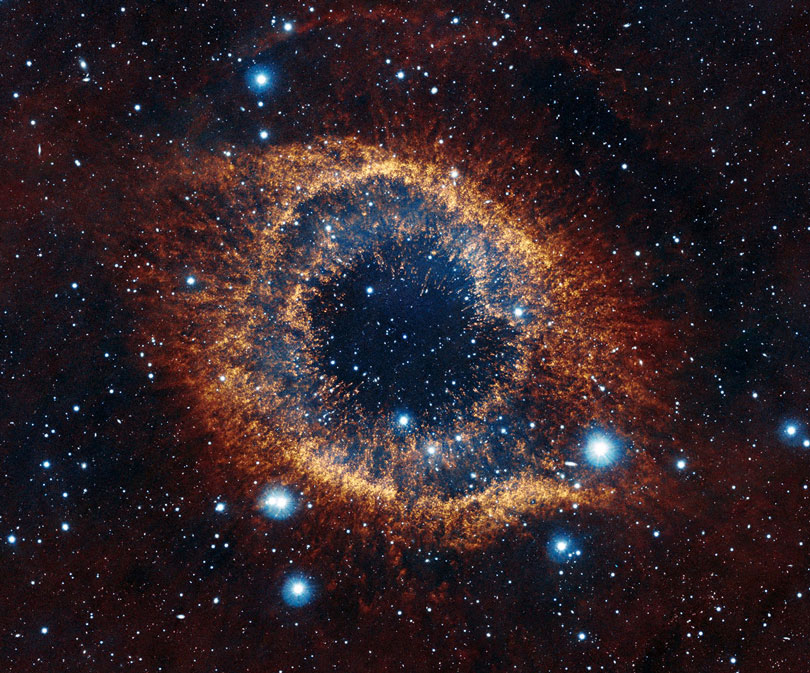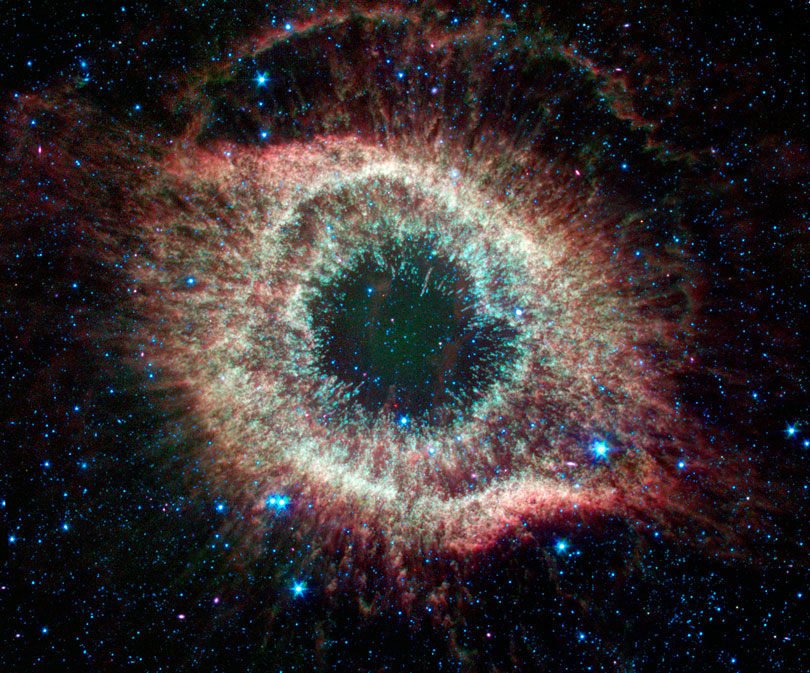- GALAXIES
- INFRARED WORLD
- INTERACTING GALAXIES
- MILKY WAY
- STAR BIRTH
- STAR DEATH
- GALAXIES
- INFRARED WORLD
- INTERACTING GALAXIES
- MILKY WAY
- STAR BIRTH
- STAR DEATH
Star Death
Helix Nebula



Visible:
Default View
Near Infrared:
LESS
MORE
Mid Infrared:
LESS
MORE
Helix Nebula
Stars like our Sun end their lives by casting off their outer layers, briefly forming a spectacular "planetary nebula" like the Helix Nebula. In visible light, we see the glow of hot gases illuminated by a hot, compact core, known as a "white dwarf." Shifting into the near-infrared reveals the glow of more complex molecules formed in the outer shell. The mid-infrared glow highlights the warm (bright red) dust surrounding the white dwarf.
Visible:
Hot gas ejected from a dying star glows.
Near Infrared:
Near-infrared light reveals cooler material.
Mid Infrared:
Warm dust is identified in mid-infrared light.
CREDITS:
Visible: NASA, NOAO, ESA, the Hubble Helix Nebula Team, M. Meixner (STScI), and T.A. Rector (NRAO). Near-infrared: ESO/VISTA/J. Emerson. Acknowledgment: Cambridge Astronomical Survey Unit. Mid-infrared: NASA/JPL-Caltech/K. Su (Univ. of Arizona).